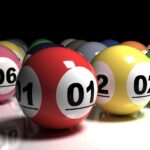You just bought your best vlogging camera; and you’re wondering what SLR means in cameras? This must be the first time you have a camera and you’re still trying to understand it. Modern DSLR cameras are very common among bloggers because they are one of the best ways to take photos and videos. Now you see this piece of image everywhere and you wonder what his name really means.
SLR value
SLR – abbreviation for Single Lens Reflex. The full name of the DSLR is therefore Digital Single Lens Reflex. SLR is a term associated with both traditional and digital cameras. The mechanism includes a mirror mounted between the film and the lens, giving the user a focus screen.
In digital SLR cameras, an SLR always consists of a mirror placed between the image sensor and the lens for the same purpose of focusing the screen.
With conventional SLR cameras, you can take photos in a movie the same way you see your subject in review mode. Modern DSLR cameras allow you to take digital photos as you see them on the LCD screen or in the viewfinder.
What is the difference between a DSLR camera and a digital camera?
The idea has already been put forward above. A DSLR is a single lens digital SLR camera or a single lens digital SLR camera. The DSLR combines the concept, mechanism and optics of a conventional SLR camera with a digital image sensor.
The invention of digital reflex cameras makes the concept of photographic film almost superfluous. Digital DSLRs appeared in the 2000s and can mainly replace film-based DSLRs. In addition, mirrorless camera systems called ‘point and shoot’ systems became popular in the mid-2000s – better known as digital cameras. Despite the growing popularity of mirrorless options, SLRs will remain the most widely used and accepted interchangeable lens camera type until 2018.
It is expected that SLR cameras will dominate the photographic industry in the coming years. It’s hard to imagine how the high quality and clarity of SLR images can be surpassed. Even a high-end digital camera would still lose the capabilities of a DSLR. As most experts would say, megapixels aren’t everything.
What is the difference between a DSLR and a digital camera (point-to-point)?
The fact that they are both numerical does not mean that they are already identical. The main difference between a digital camera and an SLR is the design of the SLR. The design of SLR cameras can only be found in DSLR cameras, not in digital cameras.
The principle of reflex design means that the light passes through the lens and into the mirror. The absorbed image bounces off the mirror and onto the image sensor or viewfinder. The term single lens comes from the alternative idea that the viewfinder has its own lens and therefore a single lens.
Because the DSLR uses the same lens and separates it from the image sensor, you get an image that is exactly the same as the image captured by the camera’s sensor.
What is the difference between a DSLR camera and a non-DSLR camera?
A DSLR camera differs from mirrorless options in that the viewfinder displays a direct optical image of the lens instead of being captured by the camera’s image sensor and then displayed on the digital display.
How does an SLR work?
DSLRs are mainly interchangeable lenses. In DSLR cameras, the mirror, image sensor, focal plane shutter, capacitor, focus screen, pentazzer and viewfinder eyepiece are integrated into a single image acquisition system.
The mechanism is activated by a moving mechanical mirror, which is lowered at an angle of 45 degrees. The purpose of the mirror is to direct the light through a matted screen. The image passes through a condenser lens and enters a pentazzer (or pentaprism) and finally into the eyepiece of the viewfinder you are looking at. Entry-level DSLR cameras do not use conventional pentaprism, but a pentazzer.
There are two ways to focus on your subject: automatically and manually. To focus manually, rotate the lens with your hands. Autofocus can be activated by pressing a special button or by pressing the shutter release button halfway.
Single lens reflex camera vs. point and photo camera
The tip and the camera are also called digital cameras. Although DSLRs are also digital in nature, many people still associate the term digital camera with point-and-shoot cameras.
While point-and-shoot cameras have their advantages, DSLR cameras can easily compete and outperform the first. Here are some of the benefits of DSLR cameras.
Improved photosensitivity
A point-and-shoot camera can never be perfect in low light. On the other hand, DSLR cameras can produce images with less noise, allowing you to capture darker images than would ever be possible with a spot camera. What’s more, the DSLR gives you a true black image without any grain in the frame.
Better image quality
This factor alone is enough to close the case, DSLR vs. point cameras. The first one is usually a larger sensor. To give you an idea of the size: A typical point and image sensor is only about 3-5% of a full-frame DSLR sensor. That’s why there’s no noise at all in SLR photos.
Get what you see.
With DSLR cameras, what you see is usually what you get. Sometimes even better! DSLR cameras can be focused fairly quickly. This camera can also capture more images per second than any other camera option available today.
Better control
DSLR cameras offer more flexibility in operation. With a wide range of manual options, SLR cameras are the best choice for professionals. SLR cameras are used in all professional photography, such as sports and documentary films.
Soft Lens
All reflex cameras have a lens. However, this type allows the use of different objectives. There is a wide range of lenses that can be mounted and used for different purposes. Depending on your needs, there are lenses that can magnify distant objects. There are also lenses that make it possible to take wide-angle photographs for picturesque species. In other words, there is an objective for a certain work. The DSLR camera keeps your back free!
Summary
What does the term SLR mean for cameras? It’s not enough to know what the acronym means. In general, there is still a lot to learn about DSLRs. And this article is not enough to summarize all this, but it can give you a clear picture of the skills of SLR photography.
Related Tags:
which is better, slr or dslr,slr vs dslr vs mirrorless,single-lens reflex camera definition,difference between slr and dslr in hindi,digital slr,semi slr vs dslr,dslr camera for beginners,slr camera diagram,dslr full form,dslr vs mirrorless,dslr video camera,what does slr mean in text,slr stand for in banking,what does slr stand for in medical terms,slr stand for in economics,dslr difference between slr,difference between dsc and dslr camera,difference between slr and dslr in malayalam,what does dslr stand for in photography,smart media definition photography,what does “burst rate” mean?,what does the r in dslr mean,what does dslr mean with cameras,difference between slr and digital camera,disadvantage of twin lens reflex camera,view camera advantages and disadvantages,mirrorless camera diagram,disadvantages of single lens reflex camera,when was the canon eos system introduced?,what is a point and shoot camera,what is a dslr,wide angle photography with 18-55mm lens,how do you take wide-angle photos,close-up photography with zoom lens,close-up shot lens,how to fake wide angle lens,slr camera,slr camera meaning,dslr camera,mirrorless camera,dslr meaning























































































